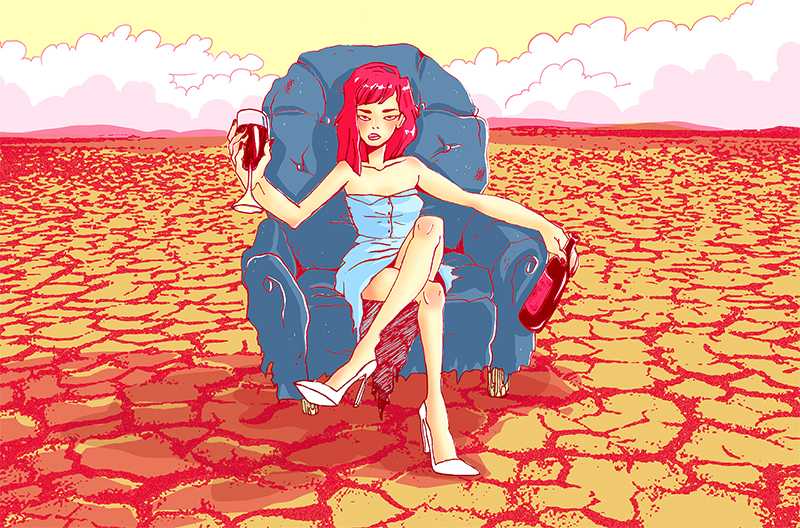Napa wineries find drought beneficial
Foto | Bryan Cordova
Pine Ridge Vineyards es una de las bodegas de Napa Valley que abrazan la escasez de agua , dando a las viñas de la tensión física que necesitan.
August 28, 2014
The drought California is facing is ironically quenching the grape vines of Napa Valley.
The water shortage is adding to the natural “stress” vines require and has become a rare opportunity for the winemakers of Northern California.
The strenuous, year-long work it takes to produce the juiciest and ripest vines has been spared the hassle of too much rain.
“Many of our vineyards stress the vines by depriving them of water, and the drought made that an easier task,” Jennifer Lamb of Napa Valley Vineyards said.
The association consists of over 500 wineries across the valley, despite being only 30 miles long and five miles wide.
Napa Valley is less than a tenth of the size of Bordeaux, France, arguably one of the biggest wine contributors in the world.
Despite not being as big as Bordeaux, California Cabarnet wines still manage to astonish wine judges by being placed in winning categories as the former. In the famous Judgment of Paris wine competition, French judges were placed in blind tasting and unknowingly placed California wines as best in each category surprising the wine world.
The biggest difference in climate in Napa is the amount of rain. Bordaeux has rains much more often than California. Winemakers struggle to keep the moisture in the soil from being too rich, causing vines to produce quantity over quality.
Vines are surviving breeds of plants. When given too little moisture, they force themselves to soak up more nutrients and produce riper and bigger vines. They require vigorous stressing by the growers to balance out acidity, juices, and tanning, the main flavor of wines.
Despite the drought, a small rain occurred in Napa earlier this year. Those drops came at an ideal time for winemakers.

“The little rain that did come was right at peak ripening, so our vine shave grown some of the best balanced ripeness in years.” Jennifer explained, “Throughout the year, vineyards spend countless hours of meticulous, calculated decisions to “stress” their vines.
The stress caused to plants benefits the grapes of vineyards in Northern California. A combination of balancing sunlight, air circulation, and thinning are just small steps in producing optimal grapes for wines.
















